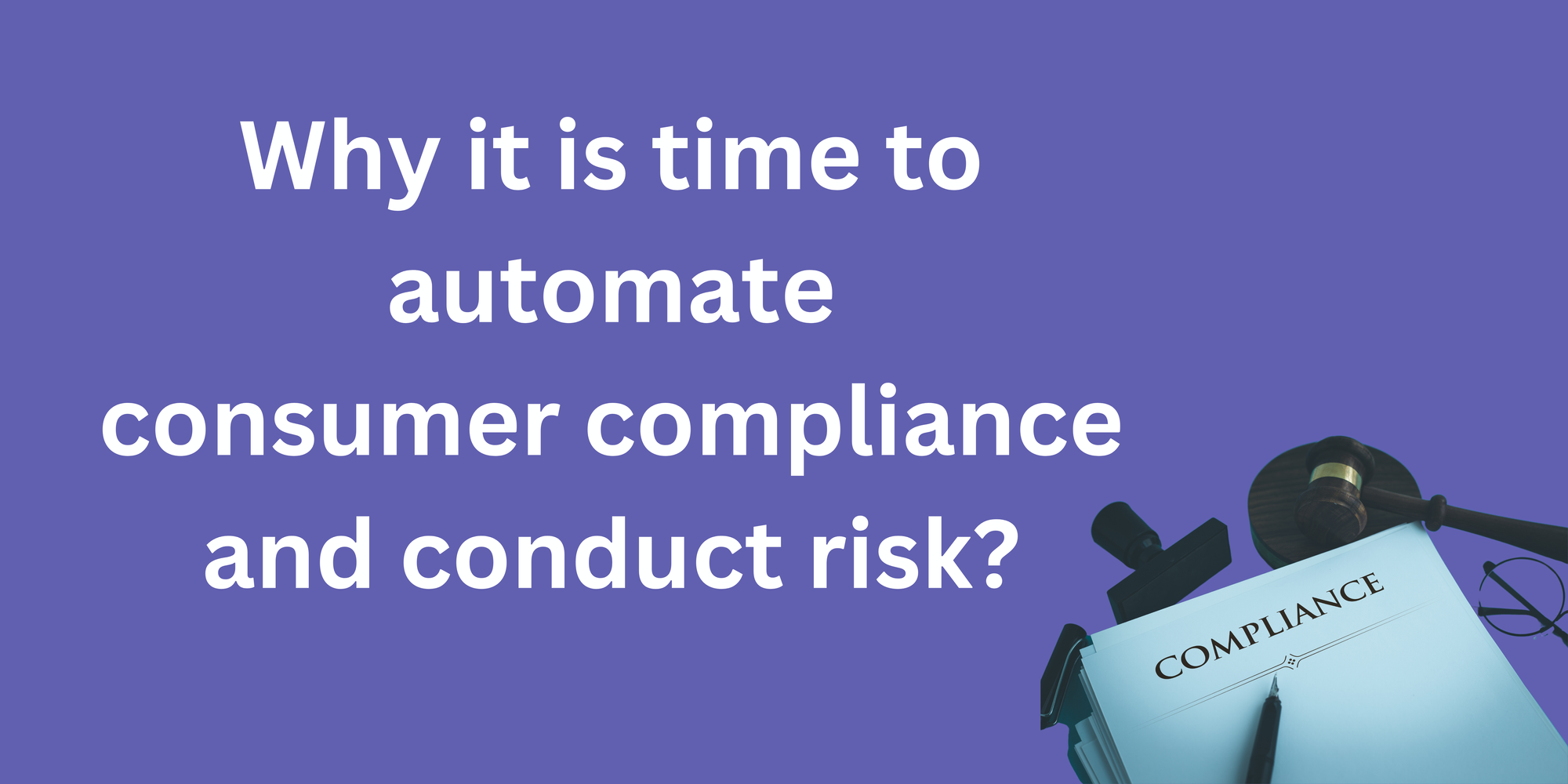Why it is time to automate consumer compliance and conduct risk

Proactive Regulatory Change & Business Impact Analysis
Beyond understanding regulations, organizations must gauge their potential implications. This involves a deep dive into how a particular regulation would impact business operations. By adopting a standardized methodology, businesses can ensure consistent assessment metrics, fostering preparedness irrespective of the magnitude or nature of the regulatory change. AI can help contextualize what obligations, policies, and controls are necessary for the change.
Continuous Monitoring with 1LOD Automation
New technologies have created opportunities for the 1LOD to gain "real-time insight into emerging risks via data-led, continuous monitoring."
This allows the 1LOD to identify and address risks proactively. Automation can perform "100 percent assurance coverage (rather than sampling) and automation of assurance tasks". This increases efficiency and coverage in the 1LOD's risk and control activities. Shift Ownership to 1LOD: By leveraging automation and continuous Monitoring, the 1LOD can take greater Ownership of risk management activities, reducing duplication of effort between the three lines of defense.
Complaints & Conduct Risk Monitoring
Complaints play a crucial role in identifying potential conduct risks within an organization. They can be captured through risk assessment surveys, phone calls, emails, or online portals. These complaints can highlight issues related to employee behavior, customer interactions, product design, sales processes, and more.
Consumer Financial Protection Bureau (CFPB) monitors consumer complaints as part of its efforts to identify systemic risks within the financial system. By analyzing patterns and trends in consumer complaints, the CFPB can spot issues that may indicate broader problems affecting consumers. This proactive approach helps the bureau target its regulatory and enforcement actions more effectively, aiming to protect consumers from unfair, deceptive, or abusive practices in the financial marketplace.
AI-based automated Monitoring of complaints plays a crucial role in identifying systemic risks by detecting patterns, trends, and anomalies in the data, AI can flag potential issues that may indicate broader systemic risks, such as widespread fraud, deceptive practices, or regulatory violations.
Failure of GRC to support risk-based culture
When there is a disconnect between an organization's culture of governance and risk management and the objectives of the GRC framework, it can impede the development of a risk-based culture.
Challenges in change management and technology integration can hinder the successful implementation of GRC practices. Organizations must ensure seamless integration of GRC tools with existing business processes, provide relevant training on GRC fundamentals, and establish a risk-aware culture to overcome these challenges.
Continuous feedback from AI-based Monitoring can help employees and Top-level executives well align risk based on culture development and prioritization,
Real-time reporting
Regulators expecting real-time reporting represent a significant regulatory expectation shift, necessitating agile and technologically advanced compliance systems.
Implement robust data infrastructure capable of capturing, processing, and analyzing data in real time. Deploy monitoring tools and dashboards that provide real-time visibility into key operational metrics and compliance indicators.
Leverage automation technologies, such as robotic process automation (RPA) and artificial intelligence (AI), to automate routine compliance tasks and streamline reporting workflows. Automation reduces manual effort, improves data accuracy, and enhances the efficiency of compliance operations. Perform regular audits and assessments of real-time reporting processes to ensure adherence to regulatory requirements and internal controls. Identify areas for improvement and implement corrective actions to strengthen compliance posture and mitigate operational risks.
Omni-channel is the way to go.
Omni-channel compliance is substantial because it ensures consistency in customer experience, mitigates regulatory risks, protects customer data and privacy, enhances brand reputation, fosters competitive advantage, and improves operational efficiency. Organizations can build trust, reduce risks, and succeed in today's complex regulatory environment by prioritizing omnichannel compliance.
Gen-AI & Human-AI collaboration
Gen-AI will experience a shift towards greater collaboration between humans and AI systems in the workplace. While AI can augment human capabilities and improve operational efficiency, organizations must manage risks associated with human-AI interaction, including potential job displacement, skills gaps, and psychological impacts on employees.
The future of operational risk in the age of Gen-AI will be characterized by increased automation, data-driven decision-making, ethical AI governance, regulatory compliance challenges, human-AI collaboration, resilience planning, continuous risk monitoring, and skills development. Organizations that proactively address these challenges and opportunities will be better positioned to thrive in the AI-driven future.
